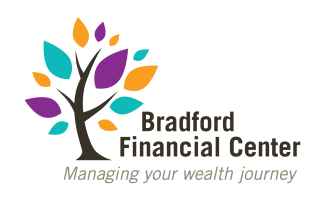
Investing Using Asset Allocation
When most investors think of investing, stock picking comes to mind. But top researchers have concluded that while most people believe individual stock selections are the key to growth, differences in asset allocation better impact total portfolio returns.
For successful long-term investing, asset allocation is far more important to your total portfolio return than stock picking. That's why most professional investors (like the top hedge-fund managers) allow analysts to do the stock picking, while they focus almost exclusively on the main allocation decisions.
What matters this year for your investments isn't what stocks you own. What matters is how much of your portfolio is in stocks versus bonds, cash, and alternatives. But successful investing means you need to know how to build a portfolio and how to value financial assets.
Learning Asset Allocation
The first rule is that asset allocation is different for everyone; it’s largely dependent on your current financial situation and risk tolerance.
At Bradford Financial, we start by building your allocation model which is entirely based on your unique situation and goals. We’ll consider how much you have in your nest egg if you’re in good health, your life expectancy, your risk tolerance and more.
Asset allocation is simply an investment strategy meant to balance risk and reward by assigning a portfolio's assets based on an individual's goals, risk tolerance, and investment ceiling. It’s important to consider the options.
- Stocks
- Bonds
- Cash & Equivalents
Stocks
Generally, when you invest in stocks of regular operating companies, they shouldn't be more than 30% of your assets and should focus on high-quality companies Bradford recommends which are the stocks you hold on to for decades because they continually raise their dividend payments.
Consider these general “rules of thumb” when buying stocks based on this 30% allocation, blue-chip category:
- Don't pay more than 10 times cash earnings for operating companies.
- Don't pay more than book value for asset-based companies.
- Get at least 5% a year in dividends or share buybacks, on average.
- Avoid operating companies with weak profit margins (operating margins of less than 10%) and high debt loads.
Bonds as Fixed Income
Your situation, age, and current assets are all dependent on how much of your assets you should place as fixed income. Generally, if one placed at least 50% of their assets in fixed income, which should include 30%-40% in corporate bonds bought at a wide discount, the yield to maturity could be at least 10%.
Other Investment Sectors
It can be a good practice to have cash part of the asset allocation. Having some cash ready and available for opportunities in the markets to purchase new investments is a wise move.
Managing the Market
Successful long-term investing relies on experienced advisors, tools, and the ability to manage the bumps. Bradford’s Watch & Manage service is a tool to help keep watch over your primary investment multiple times daily.
This technique allows us to "trend manage" clients' invested assets. Our management system reacts to the "trend" of the market, not necessarily capturing the highs and lows, but focusing on the right time and place in the market to help maximize profits and assist you in protecting asset values during volatile security market cycles.
Bradford’s Watch & Manage service is designed to seek opportunities for higher returns while potentially decreasing their portfolio's risk factor.
So, if you’re ready to review your asset allocation and position your investments for returns, it’s time to look to Bradford’s Watch & Manage service to help you have a plan for asset allocation and riding the ebbs and flows of the market, to help meet your goals.
Certain risks exist with any type of investment and should be carefully considered before making any investment decisions.
Bradford Disclosure: Asset allocation and diversification do not ensure a profit or protect against loss.

